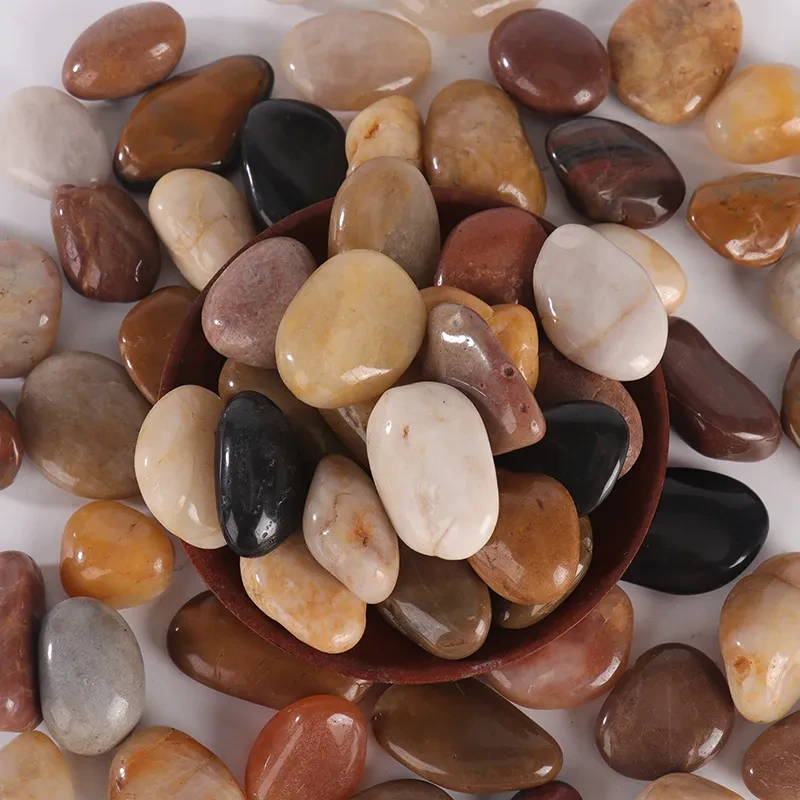Dec . 03, 2024 10:27 Back to list
what type of rock is cobblestone
Cobblestones are a unique and historic element of many streets and pathways around the world. These rounded stones, typically derived from various types of rock, have been used for centuries in paving, providing durability and a distinct aesthetic appeal to urban landscapes. Understanding the type of rock that constitutes cobblestones is essential to appreciating their use and significance throughout history.
Cobblestones can be made from different types of rock, but they are primarily associated with igneous, metamorphic, and sedimentary rocks. Each type contributes distinct characteristics to the cobblestone, influencing its appearance, durability, and suitability for paving.
Igneous Rocks
Igneous rocks form through the cooling and solidification of molten magma. Common examples of igneous rocks used for cobblestones include granite and basalt. Granite, known for its hardness and durability, can withstand heavy traffic and adverse weather conditions, making it an excellent choice for roads and walkways. Its aesthetic charm and variety of colors—from pink to gray—also contribute to its popularity. Basalt, a darker igneous rock, is another option commonly found in cobblestone applications, renowned for its strength and lower porosity.
Metamorphic Rocks
Metamorphic rocks are formed under intense heat and pressure, leading to changes in mineral structure and texture. One of the most commonly used metamorphic rocks for cobblestones is schist, which is valued for its unique textures and colors. Schist can exhibit a glittery appearance due to the presence of mica and other minerals. Additionally, marble, though more commonly recognized for its use in sculptures and buildings, can occasionally be found in cobblestone form, offering a striking appearance with its veins and brilliant finish.
Sedimentary Rocks
what type of rock is cobblestone

Sedimentary rocks, formed from the accumulation of mineral particles and organic matter, can also be used in cobblestone construction. Limestone is a popular example; however, it's less durable than igneous options and is primarily used in areas with lower traffic. Cobblestones made from sedimentary rocks can offer a softer, more textured appearance, enhancing the aesthetic appeal of pedestrian lanes and decorative pathways. Sandstone, another sedimentary rock, is known for its range of colors and designs, which can create visually stunning pavements.
Historical Context and Usage
Historically, cobblestones were an essential part of city planning and development, particularly during the Middle Ages. They provided a method of surfacing streets that was durable yet easy to repair. The rounded shape of cobblestones helped create a smoother driving surface, as gaps between the stones allowed for water drainage, minimizing mud and puddles.
In many European cities, cobblestone streets are now iconic features, reflecting centuries of history. For instance, streets in cities like Paris, Rome, and Amsterdam are lined with these stones, not only for functional purposes but also for their contribution to the character and charm of the city. In modern times, while asphalt and concrete have largely dominated street construction due to their cost-effectiveness and ease of installation, cobblestones have made a resurgence in certain areas for aesthetic and historical preservation reasons.
Conclusion
In conclusion, cobblestones are an intriguing aspect of paving, made from various types of rock, including igneous, metamorphic, and sedimentary varieties. Each type brings its unique properties, affects durability, and impacts overall aesthetics. Despite the prevalence of modern paving materials, the historical significance and visual appeal of cobblestones ensure they remain a beloved choice in many urban environments. Their use captures a sense of history, character, and enduring beauty, connecting contemporary cities to their past. Whether in the winding streets of an ancient town or a modern plaza, cobblestones continue to tell the story of our built environment, one stone at a time.
-
Transform Your Outdoor Spaces with Premium Black Rocks for Landscaping
NewsAug.01,2025
-
Exploring the World of Green Jade: Types, Meanings, and Values
NewsAug.01,2025
-
Enhance Your Outdoor Spaces with Premium Black Garden Stones and Pebbles
NewsAug.01,2025
-
Elevate Your Garden Design with Black River Stones and Decorative Landscape Rocks
NewsAug.01,2025
-
Discover the Beauty and Symbolism of Green Jade: From Raw Stones to Luxury Pieces
NewsAug.01,2025
-
Discover the Beauty and Meaning of Green Jade Crystals
NewsAug.01,2025






